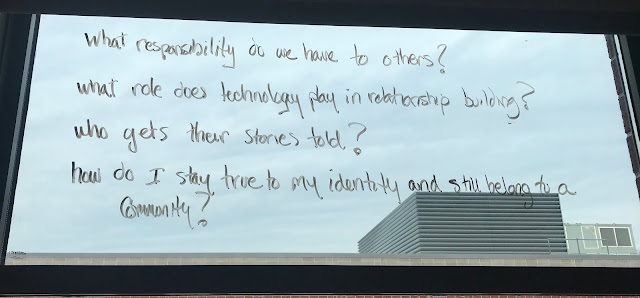Purdue OWL: Verb Tenses:
Sequence of Tenses
Summary:
This handout explains and describes the sequence of verb tenses in English.
Contributors:Chris Berry, Allen Brizee, Elizabeth Angeli
Last Edited: 2013-09-14 09:29:01
Strictly speaking, in English, only two tenses are marked in the verb alone, present (as in "he sings") and past (as in "he sang"). Other English language tenses, as many as thirty of them, are marked by other words called auxiliaries. Understanding the six basic tenses allows one to re-create much of the reality of time in their writing.
Simple Present: They walk
Present Perfect: They have walked
Simple Past: They walked
Past Perfect: They had walked
Future: They will walk
Future Perfect: They will have walked
Problems in sequencing tenses usually occur with the perfect tenses, all of which are formed by adding an auxiliary or auxiliaries to the past participle, the third principal part.
ring, rang, rung
walk, walked, walked
The most common auxiliaries are forms of "be," "can," "do," "may," "must," "ought," "shall," "will," "has," "have," "had," and they are the forms we shall use in this most basic discussion.
Present Perfect
The present perfect consists of a past participle (the third principal part) with "has" or "have." It designates action which began in the past but which continues into the present or the effect of which still continues.
1. Betty taught for ten years. (simple past)
2. Betty has taught for ten years. (present perfect)
The implication in (1) is that Betty has retired; in (2), that she is still teaching.
1. John did his homework. He can go to the movies.
2. If John has done his homework, he can go to the movies.
Infinitives, too, have perfect tense forms when combined with "have," and sometimes problems arise when infinitives are used with verbs such as "hope," "plan," "expect," and "intend," all of which usually point to the future (I wanted to go to the movie. Janet meant to see the doctor.) The perfect tense sets up a sequence by marking the action which began and usually was completed before the action in the main verb.
1. I am happy to have participated in this campaign!
2. John had hoped to have won the trophy.
Thus the action of the main verb points back in time; the action of the perfect infinitive has been completed.
Past Perfect
The past perfect tense designates action in the past just as simple past does, but the action of the past perfect is action completed in the past before another action.
1. John raised vegetables and later sold them. (past)
2. John sold vegetables that he had raised. (past perfect)
The vegetables were raised before they were sold.
1. Renee washed the car when George arrived (simple past)
2. Renee had washed the car when George arrived. (past perfect)
In (1), she waited until George arrived and then washed the car. In (2), she had already finished washing the car by the time he arrived.
In sentences expressing condition and result, the past perfect tense is used in the part that states the condition.
1. If I had done my exercises, I would have passed the test.
2. I think George would have been elected if he hadn't sounded so pompous.
Future Perfect
The future perfect tense designates action that will have been completed at a specified time in the future.
1. Saturday I will finish my housework. (simple future)
2. By Saturday noon, I will have finished my housework. (future perfect)
Review
1. Judy saved thirty dollars. (past)
2. Judy will save thirty dollars. (future)
3. Judy has saved thirty dollars. (present perfect)
4. Judy had saved thirty dollars by the end of last month. (past perfect)
5. Judy will have saved thirty dollars by the end of this month. (future perfect)
Notice: There can be only one "would have" action group in a sentence.



